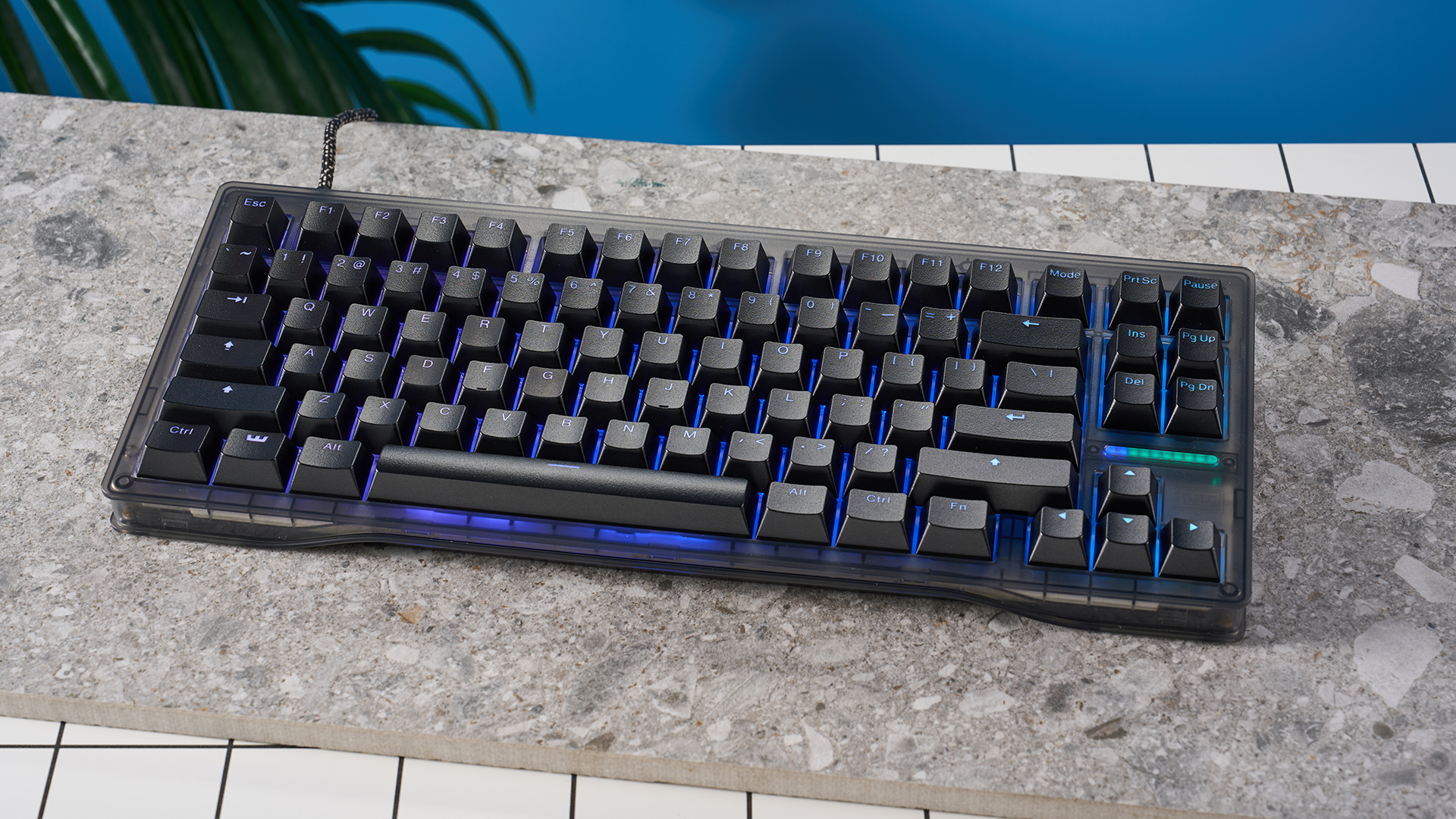
When the Wooting 80HE landed on my desk, I wasn’t overly excited. Don’t get me wrong, I was keen to test out the fabled Wooting/Gateron magnetic switches and associated gaming features, but there’s no doubt about it: this keyboard looks like a traditional gaming keyboard. And traditional gaming keyboards ain’t exactly my jam.
Clad almost exclusively in either lurid white or jet black, punctuated by vomit-inducing rainbow RGB, with the usual bland squared-off keycaps and often very little customizability, even the best gaming keyboards do little for me versus custom productivity decks. That’s especially true given the gaming performance of decks from traditional productivity manufacturers now employing magnetic switches, like the NuPhy Air60 HE and Keychron K2 HE.
To me, Dutch manufacturer Wooting’s latest board, the 80HE, looked like yet another cookie-cutter gaming deck, only with some trick switches. But appearances are deceiving. And believe me, this is no ordinary gaming keyboard. From its powerful Lekker V2 switches, to its glorious typing and Wooting’s feature-packed software, the Wooting 80HE does a hell of a lot to justify its steep(ish) $199 price. So, is it worth your money? Find out in my full Wooting 80HE review.
Wooting 80HE review: Cheat sheet
- What is it? An 80% TKL magnetic gaming keyboard from Dutch manufacturer Wooting
- What does it cost? $199 from Wooting, although the board is currently in pre-order
- What’s good? Its magnetic switches and incredible software enable a huge arsenal of gaming features
- What isn’t? Its PCB is non-standard, affecting aftermarket part compatibility, it’s wired only and there are similarly powerful rivals out there for less money
Wooting 80HE review: Specs
Wooting 80HE review: The ups
An unmitigated arsenal of gaming features, sublime companion software, gorgeous Lekker V2 switches and a premium design. There’s a hell of a lot to love about the Wooting 80HE.
Gaming arsenal
No magnetic gaming keyboard in 2025 would be complete without adjustable actuation, Rapid Trigger or specifiable SOCD resolutions, and thanks to its Lekker V2 magnetic switches the 80HE leaves nothing out.
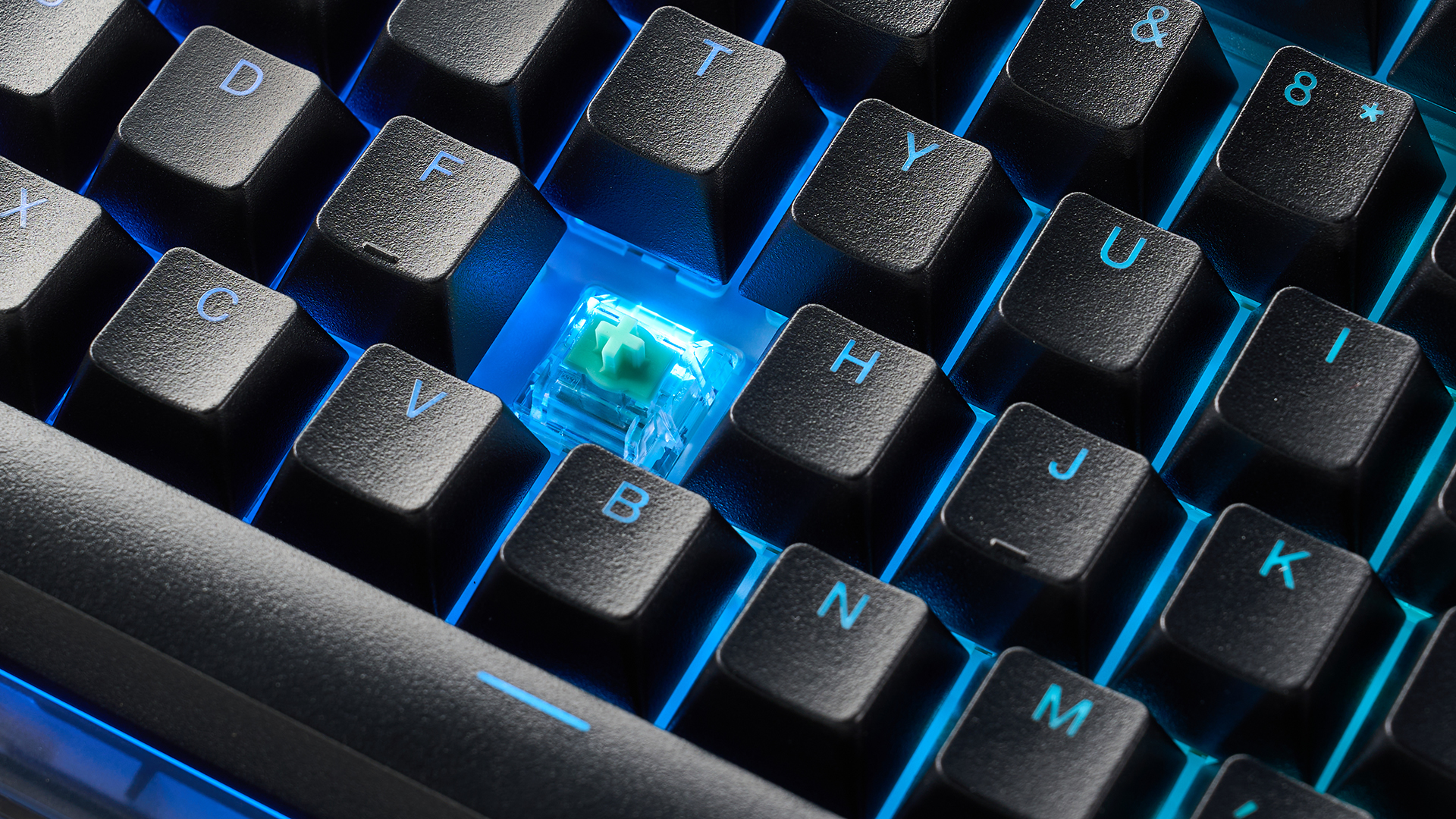
The Lekker V2s actuate down to 0.1mm — enabling highly responsive inputs while gaming, although actuation distance can be upped for typing profiles to reduce mistypes. There are quad actuation points per key (A.K.A. “Dynamic Keystroke”), which can each have separate inputs assigned. That means a single key can perform four actions (two each on the downstroke and upstroke) based on keypress distance.
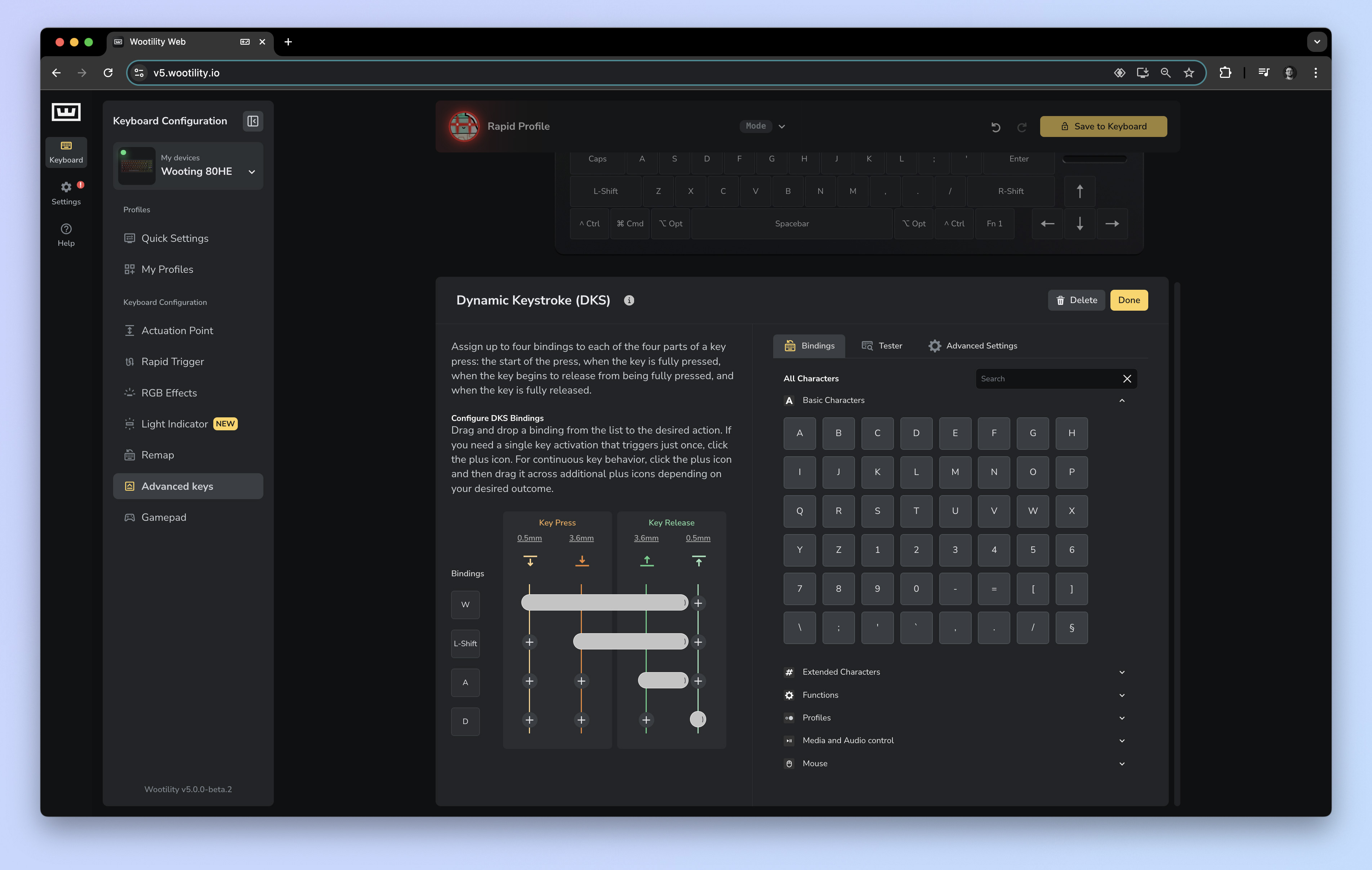
You can specify one of four SOCD resolutions per key, the most important being Last Key Prioritization (A.K.A “Snap Tap”), which makes counter strafing easier in competitive games like Valorant and CS2. There’s also the rather cringeworthily-named “Rappy Snappy”, which acts the same as NuPhy’s “Rapid Shift” — when two keys are pressed, the board will prioritize the furthest actuation key, resulting in a similar effect to Snap Tap, while potentially skirting in-game Snap Tap detection and game bans. If you haven’t read enough silly names yet, there’s “Mod Tap”, which lets you set different key inputs based on holding or tapping the key — a feature also found on the Air60 HE.
The Wooting 80HE scans and polls at 8,000Hz, meaning it both scans itself for inputs and sends them to the computer 8,000 times per second (A.K.A “true 8K polling”). For most players, these figures primarily serve as bragging rites, but for professional players provide peace of mind that inputs are as unlikely to be missed as possible.


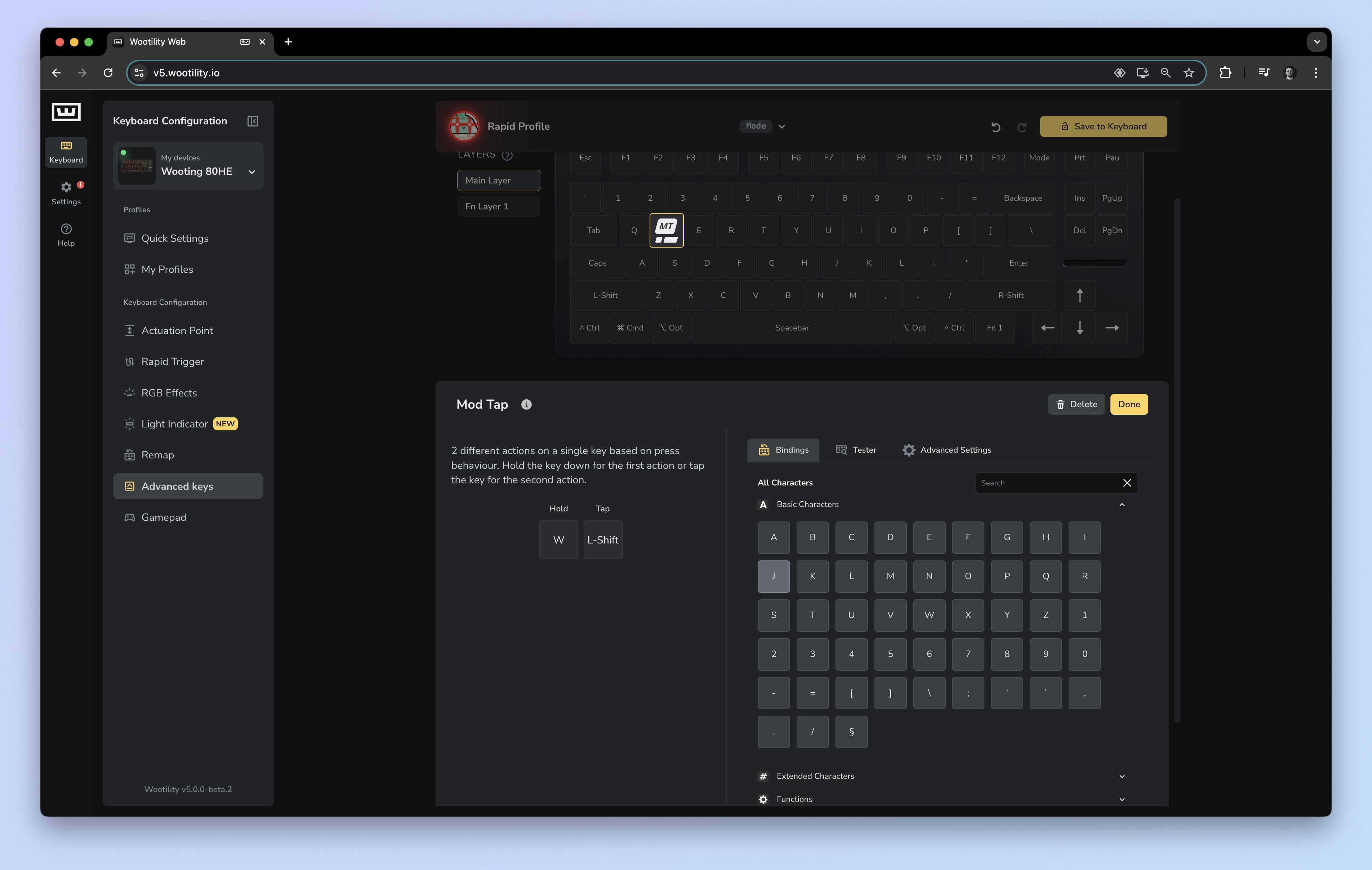
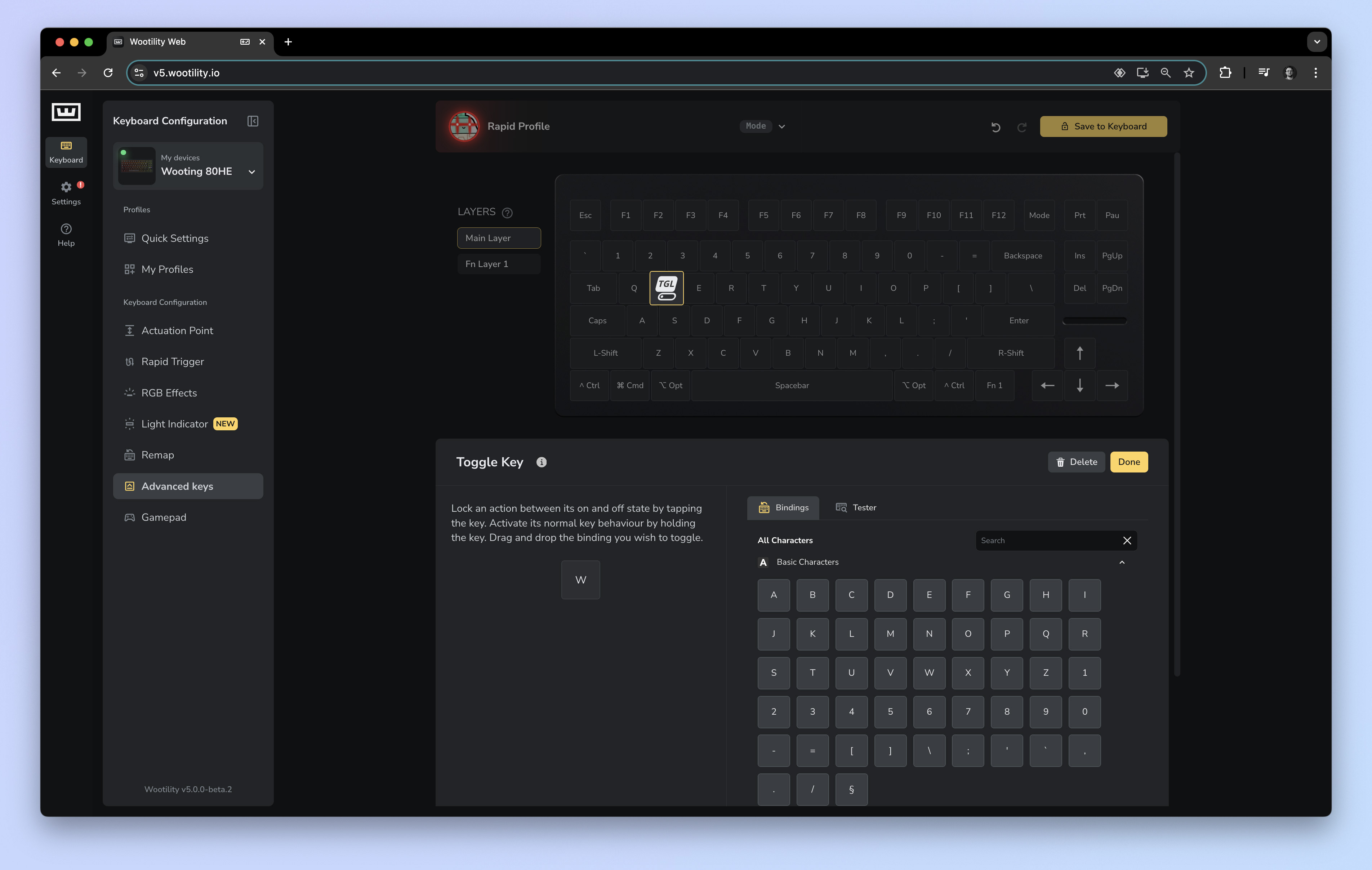
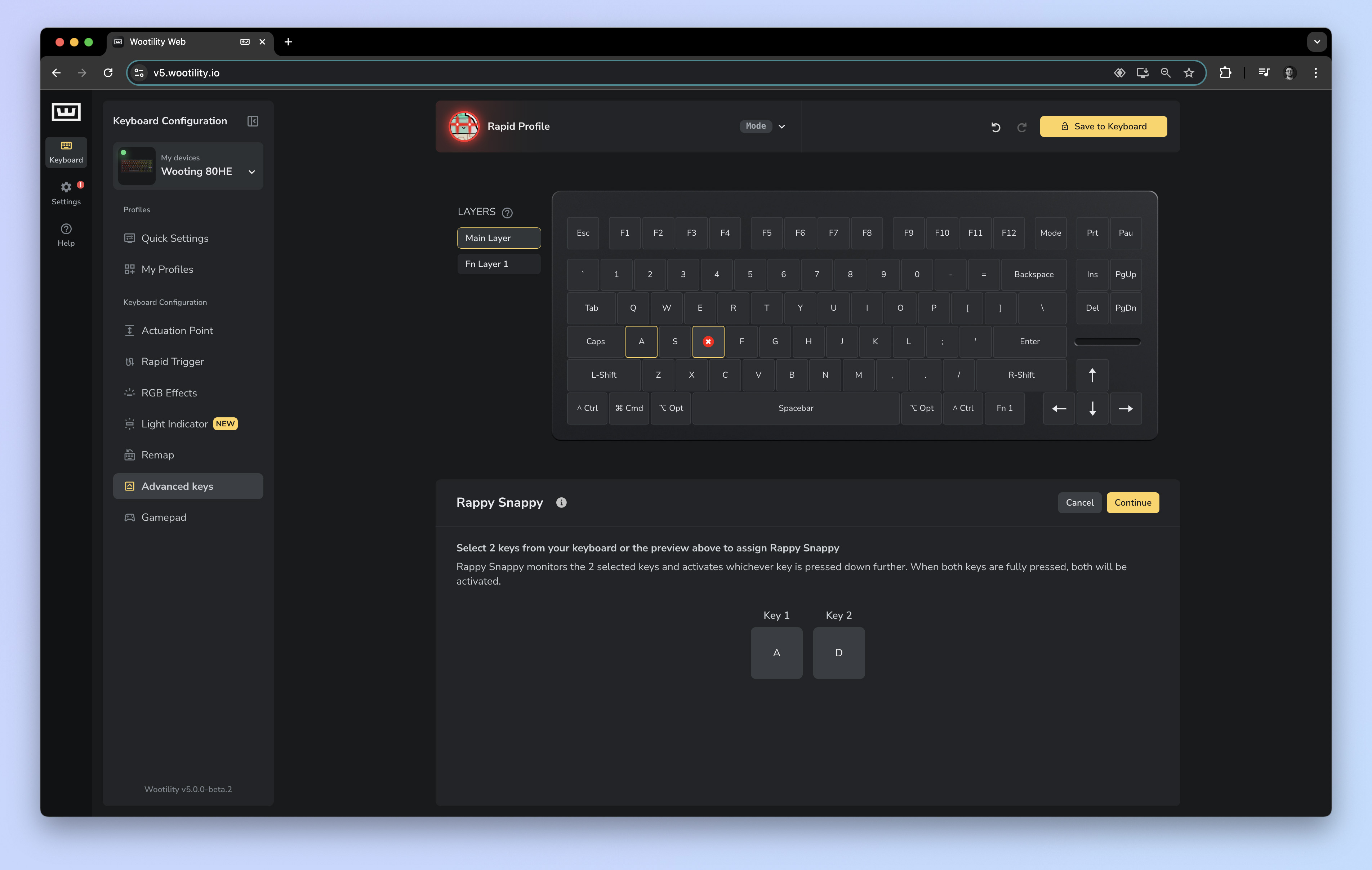
You can find all these features in rivals, but usually only disparately. The NuPhy Air60HE and Field75 HE wrap all the same features thanks to their Gateron Jade Pro switches. What you won’t find from NuPhy, though, is the 80HE’s Gamepad mode, which maps keys to the analog button, stick and trigger inputs of a controller.
Elite gaming performance
I tested the Wooting 80HE in Counter Strike 2, Isonzo and STALKER 2: Heart of Chornobyl. I even dabbled in a few hours of heavily modded Total War: Rome II, while I waited actual hours for a near 130GB patch of STALKER 2 to download and deploy.
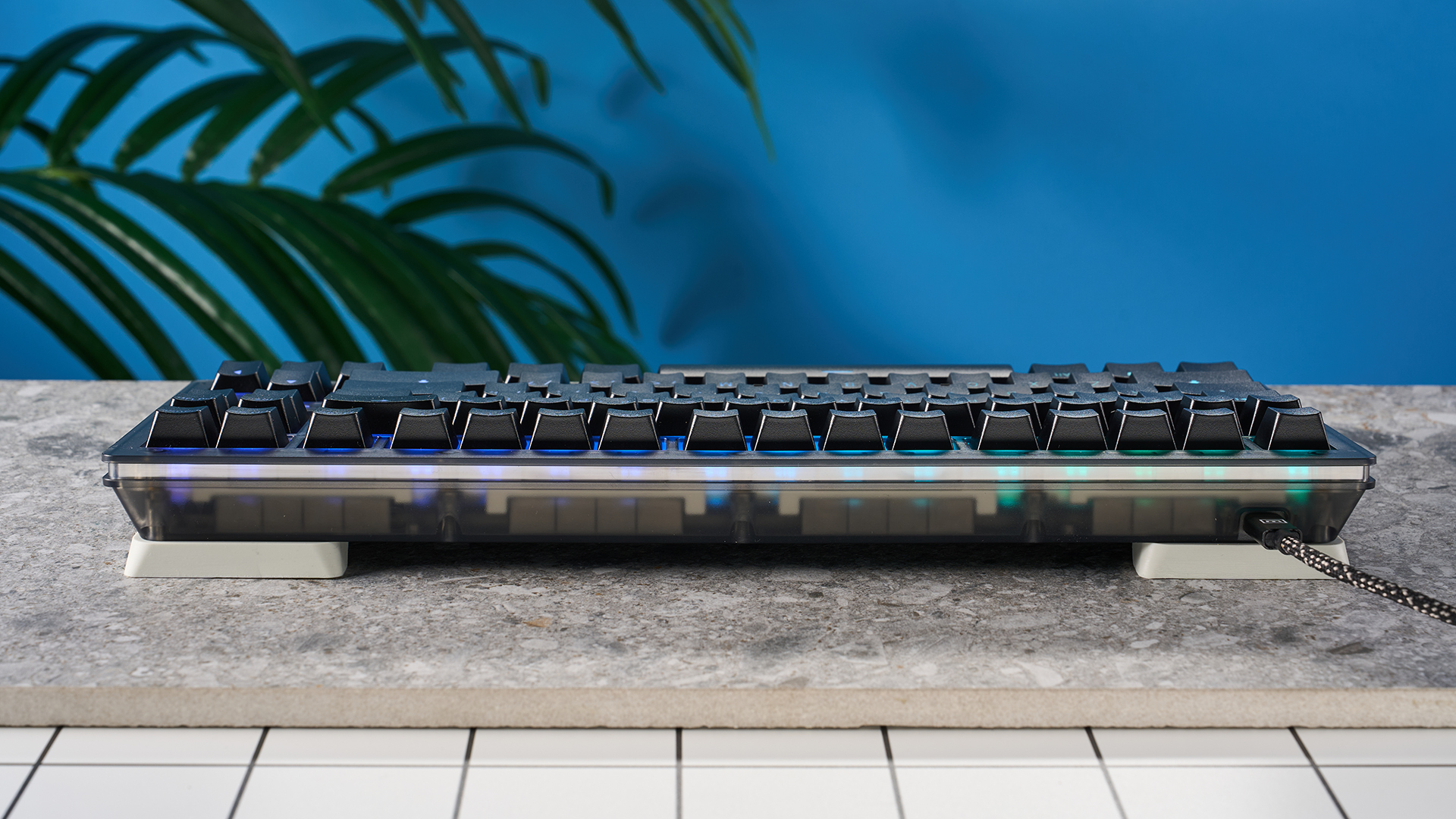
The Wooting 80HE was a joy to use in every game. I’m a fairly decent Isonzo player anyway (get me!), but using Last Key Prioritization to jiggle about and avoid accuracy penalties in 1-1 confrontations was pretty cool — it didn’t stop me getting sniped from a far-off mountainside, though. I also relished having my movement and most-used keys at a super low 0.3mm actuation: this allowed me to merely nudge the ‘G’ key and rapidly dispense a grenade, for example.
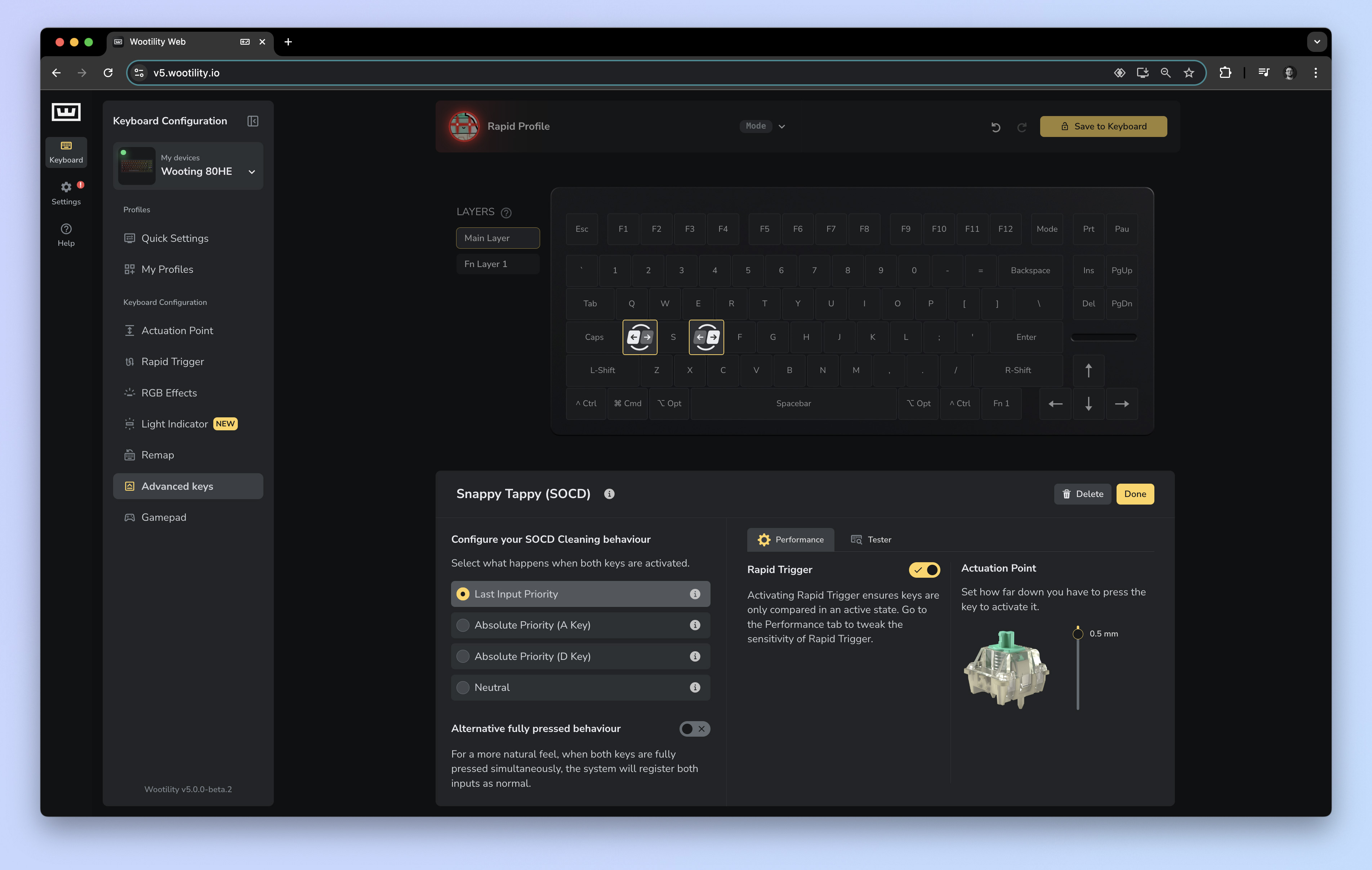
I dared not use LKP in Counter Strike 2, lest I be kicked. Nevertheless, the rapid actuation of my gaming profile made inputs feel super snappy and I was able to net some above average scoreboard rankings.
Even in less frenetic games, the 80HE came in handy. I set a custom RPG profile before playing Stalker 2, ramping up the actuation distance of keys I kept knocking, like ‘Q’ and ‘E’, and reducing the number of accidental energy drinks or med kits I was using previously. Even to the average gamer like me, the 80HE can make a noticeable difference to gameplay.
Best-in-class software
None of the above matters at all without powerful software to enable and customize it all. Thankfully, Wooting’s Wootility software is as powerful as they come, letting you tweak features, remap binds and macros and generally tailor the board to your beck and whim.
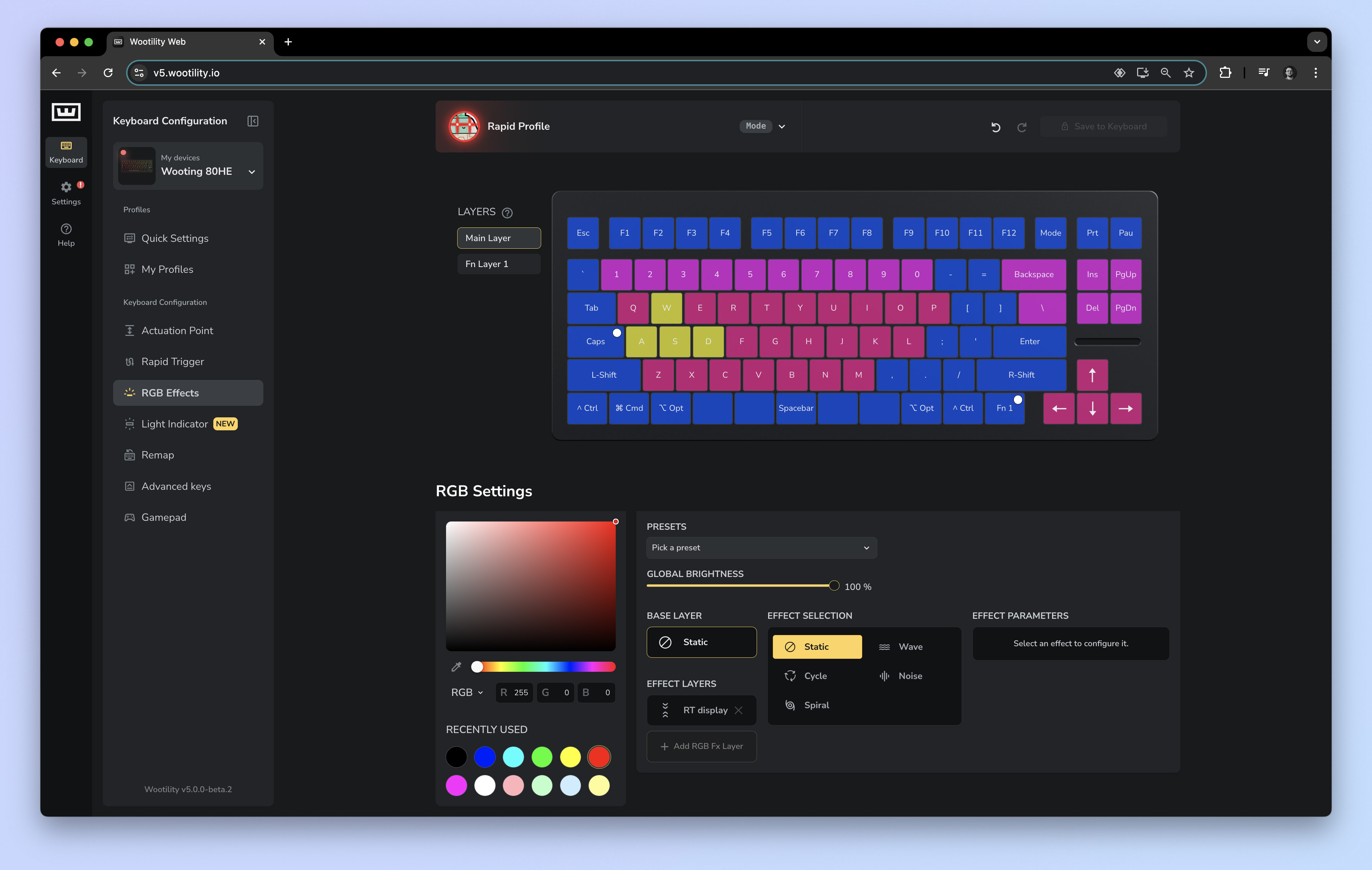
The range of customization is deep and extensive, and there’s very little about the board you can’t alter to your preference. It’s simple to get running, easy to use and works reliably, with no bugs or crashes so far in my testing. Wootility also makes it easy to update firmware, which is something that can’t be said for other boards, like the NuPhy Field75 HE, which proved a pain to update in testing.
Available as a standalone application on Windows, macOS and Linux, Wootility is also available as a web app, so you can tweak your board from virtually any computer via a browser.
Effortless typing
The 80HE’s Gateron x Wooting Lekker V2 switches are as lovely for typing as for gaming. You can choose either Lekker L45 (yellow) or Lekker L60 (green switches). The L45 is the softer-sprung of the two switches, requiring a 30g initial and 45g end force, versus the 40g/60g initial/end force of the L60. I prefer the softer actuation of the L45, which lends a lightweight, breezy feel to typing that complements the silent nature of the switches.
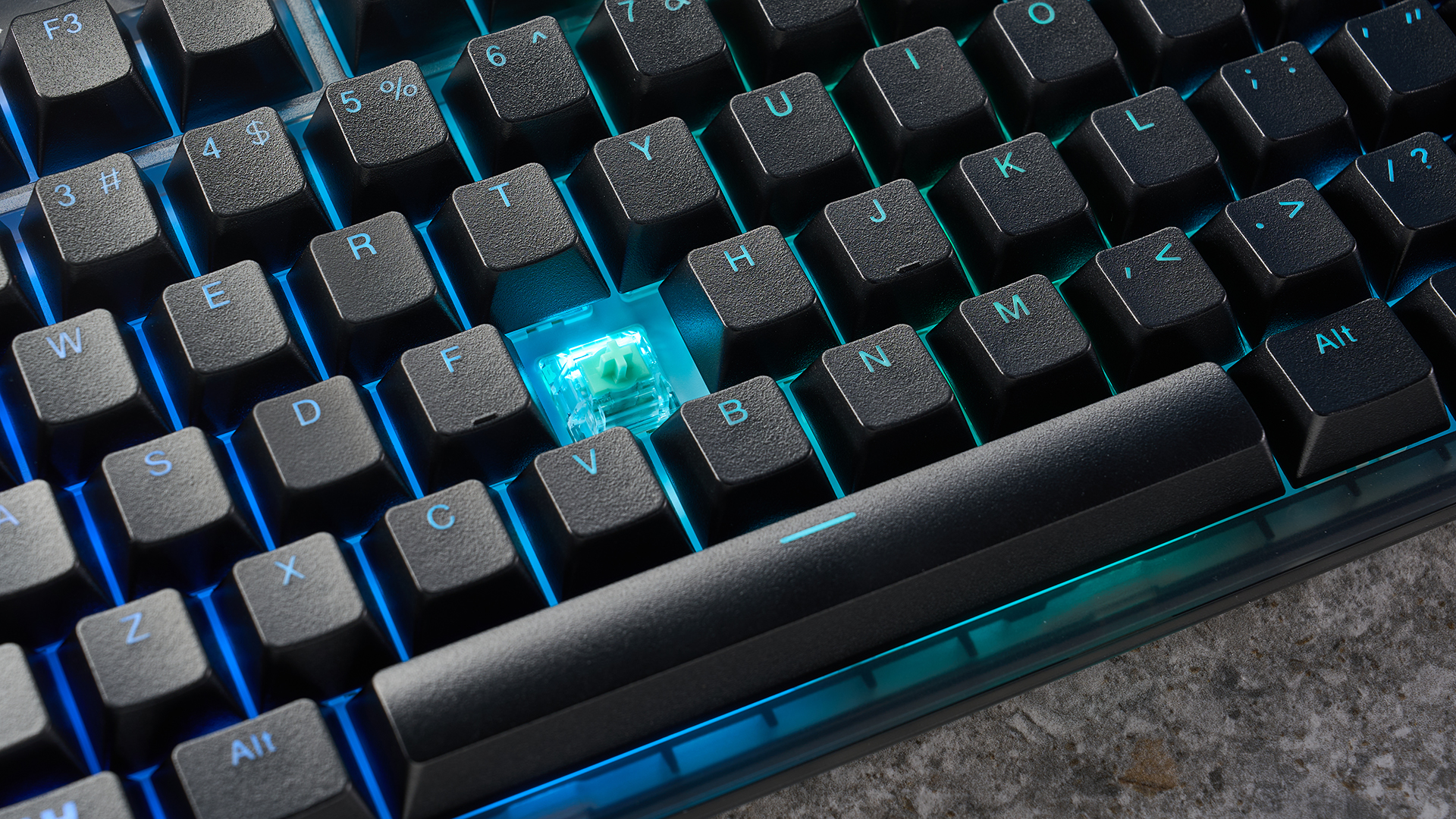
On that note (or lack thereof), both switches are silent and linear. If you want anything other than linear behavior from your magnetic switches, you’ll currently need to opt for boards compatible with Glorious’ switches, which are alone in offering tactile or clicky Hall Effect switches right now. Generally speaking, most magnetic boards (except the Glorious GMMK 3 HE) at the moment suffer from a lack of compatibility between their default and other magnetic switches. Likewise, with the 80HE, there are only two switches to choose from: the Lekker V2s. Limiting in theory, yes, but these switches are so good, I can't see anyone tiring of them for a while.
The 80HE uses OEM profile keycaps. These aren’t my preference for typing thanks to their squared edges and relatively tall height, which I find affects my accuracy versus more sculpted, productivity-oriented profiles like OSA or NuPhy’s mSA. They’re still absolutely fine for typing, and I was able to put in quick typing speeds with decent accuracy.
Gorgeous RGB

I wouldn’t say the 80HE is a particularly good-looking keyboard, but it certainly isn’t ugly. I tested the Wooting 80HE in the Ghost PCR ABS case — a frosted transparent gray color. Ghost PCR allows you to see the internals of the board, which complements the board’s RGB, diffusing the light for a softer, less garish glow. On the topic of RGB, Wooting’s lighting presets (customizable via Wootility) look stunning, especially the default Lekker preset, with its cool green and white aesthetic and keys that change color when pressed.
Premium feel

The 80HE just oozes premium. As I mentioned earlier, I was initially a little disappointed by the keycaps, thinking they look like run-of-the-mill, bargain-basement gaming caps. In reality, they’re high-quality doubleshot PBT shine-through caps, with a gently textured surface that feels fantastic even under my calloused fingertips. Wooting’s product page mentions a set of ABS caps — although I’ve been unable to actually spec any boards as such while the deck is still in pre-order — which I would avoid, as PBT stands up better to grease, wear and shine.
Wooting sent me the Ghost PCR ABS case model, which is built exceptionally well for the most part. There’s a lot of lateral flex in the case, but this doesn’t affect typing and you have to literally twist the keyboard in your hands to notice it — hardly indicative of any real world use scenario. The bottom of the case under the Space key also bends downwards away from the keys, although again you’d have to be deliberately pushing the area to notice.
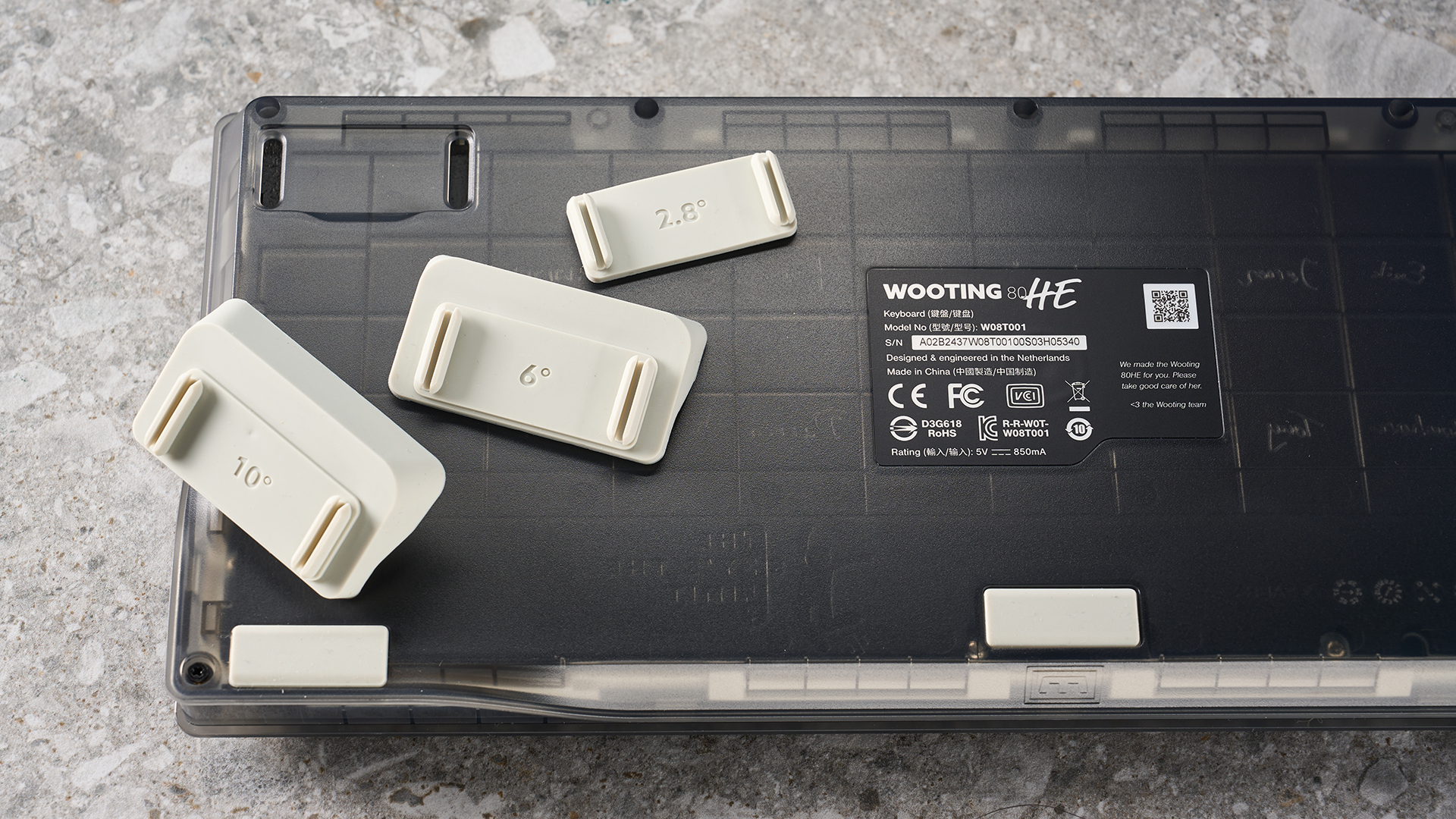
The internals of the 80HE are also high quality. There’s plenty of acoustic damping for a refined sound, gasket mounts for a cushioned feel, and screw-in stabilizers keeping larger keys free from wobble. The board comes with three sets of rubber feet for height adjustment, plus a braided cable. Everything is bagged in soft-touch plastic pouches, emblazoned with the understated Wooting branding. It just feels like a special product.
Wooting 80HE review: The downs
There’s very little to dislike about the Wooting 80HE, and most of these downs are nitpicks. Serious modders will want to look elsewhere though.
Odd 80% layout
The Wooting 80HE doesn’t adhere to the usual 80% TKL layout, dispensing with the top right-hand triple function cluster usually found on boards like the Keychron Q3 Max and NuPhy Gem80. This has freed up space on the top line, allowing Wooting to squeeze the Nav cluster vertically, from a 3x2 to a 2x3 layout, then move the Nav and arrow clusters closer to the main key cluster.
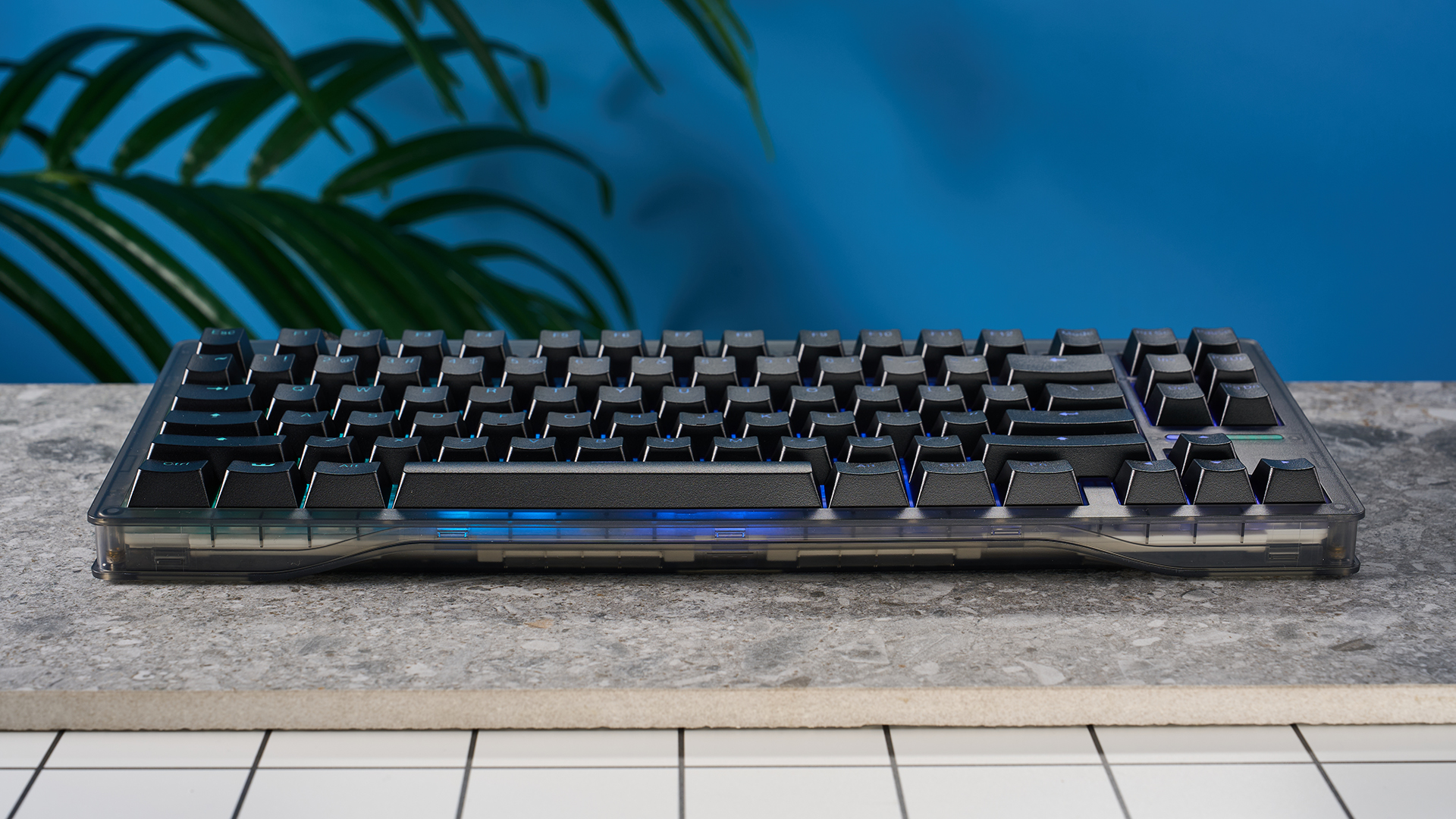
The end result is a more compact board than most 80% TKLs — the Wooting is only around an inch longer than 75% boards like the Keychron K2 HE — without sacrificing much of the larger layout’s functionality. Of course, if you want maximum freedom with placement, there's the Wooting 60HE+.
If you want a more maneuverable 80% TKL and won’t be doing much modding past changing keycaps, this is your board. However, if you want to customize your board more seriously, this compact layout means a non-standard 80% PCB, which will affect the compatibility of various aftermarket components. As I mentioned earlier, there's also the fact that switch compatibility with this socket is limited at the moment, further affecting its modding potential.
Wired-only design
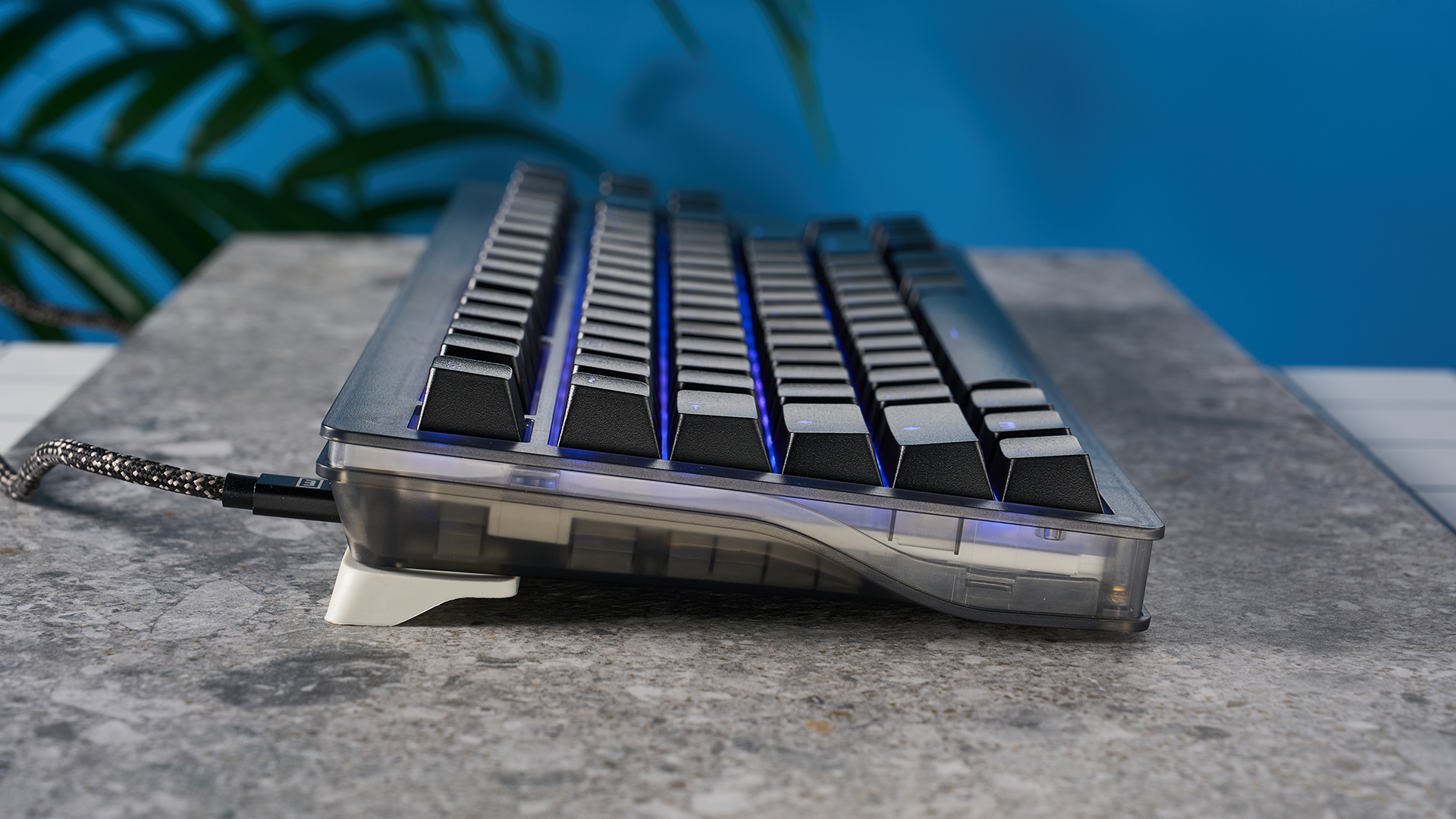
The Wooting 80HE is wired-only, which is neither surprising, nor a huge issue. Wired connections are de rigeuer in the gaming keyboard arena, and indeed the preference for many gamers wanting to minimize lag. The 80HE comes with a beautiful braided cable, too, which hasn’t caused me any friction issues while gaming.
That said, given how well the 80HE performs for productivity, it’d be nice to have a Bluetooth or 2.4G wireless mode on offer, too. The accompanying battery would make the board larger, but the 80HE is hardly a compact board to begin with, and is intended to lie in state on a desk. A wireless mode would make it much easier to jump between different computers and systems, as I often do for work, without having to unplug and replug it in each time.
Price
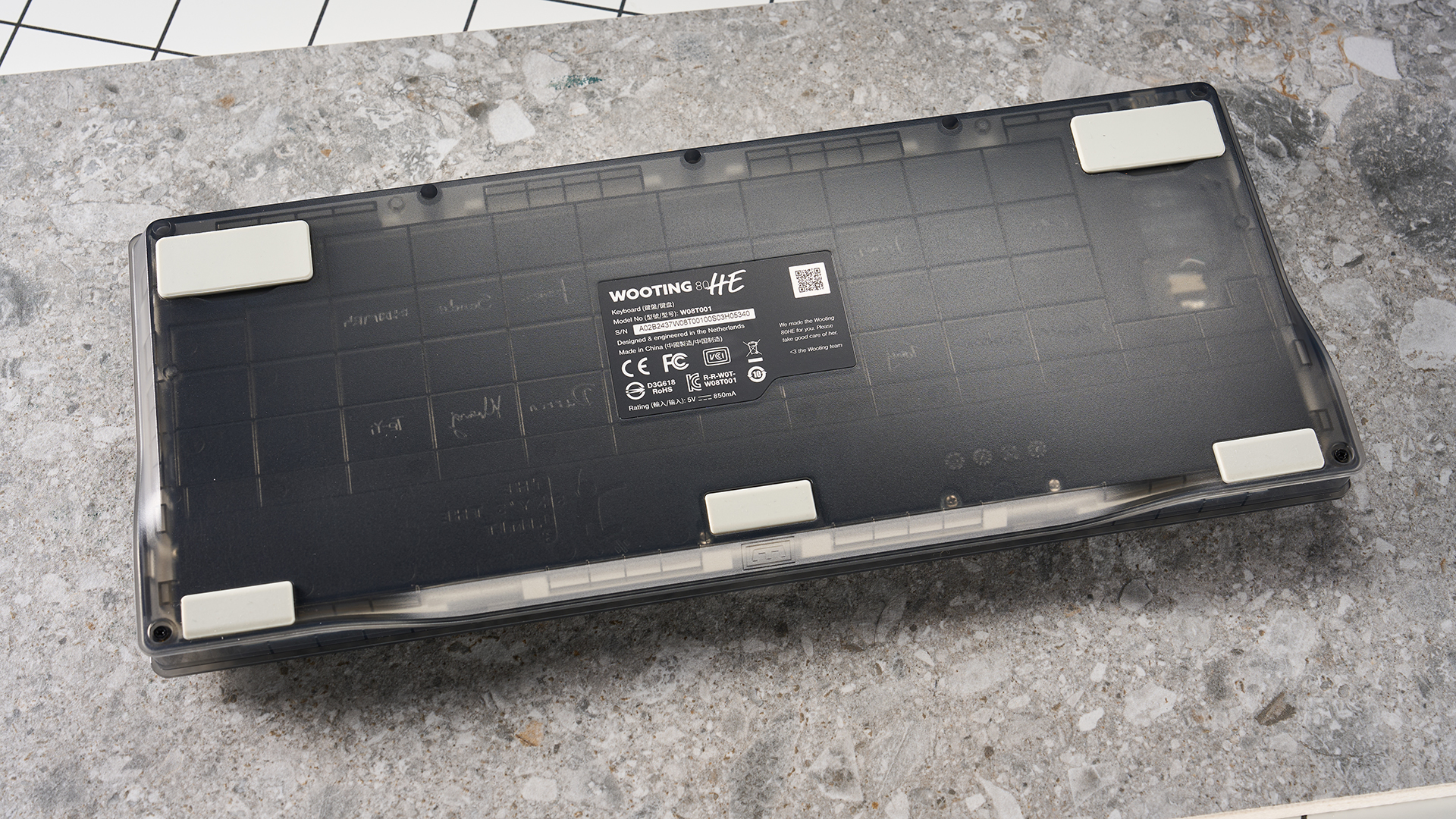
Given what it offers, the Wooting 80HE easily justifies its $199 price. There are plenty of boards out there, like the Keychron Q1 HE or Glorious GMMK3 HE, that cost more and do less. So what I’m about to say is a very soft negative indeed.
However, this is still a pricey board at $199, and the simple fact of the matter is there are rivals out there that offer virtually the same roster of features, attractive styling and strong build quality, all for less money. The NuPhy Air60HE ($139) and NuPhy Field75 HE ($169) are prime examples, offering 8K polling and all the magnetic gaming features save a Gamepad mode. If you can live with 1K polling (which most people save the upper echelons of competitive gaming can), then the Keychron K2 HE ($130) is a fantastic gaming keyboard, offering many of the magnetic features, plus wireless connectivity and a more productivity-oriented setup. As a result, the K2 HE would be my suggestion if you need a hybrid board for productivity and gaming.
Wooting 80HE review: Verdict
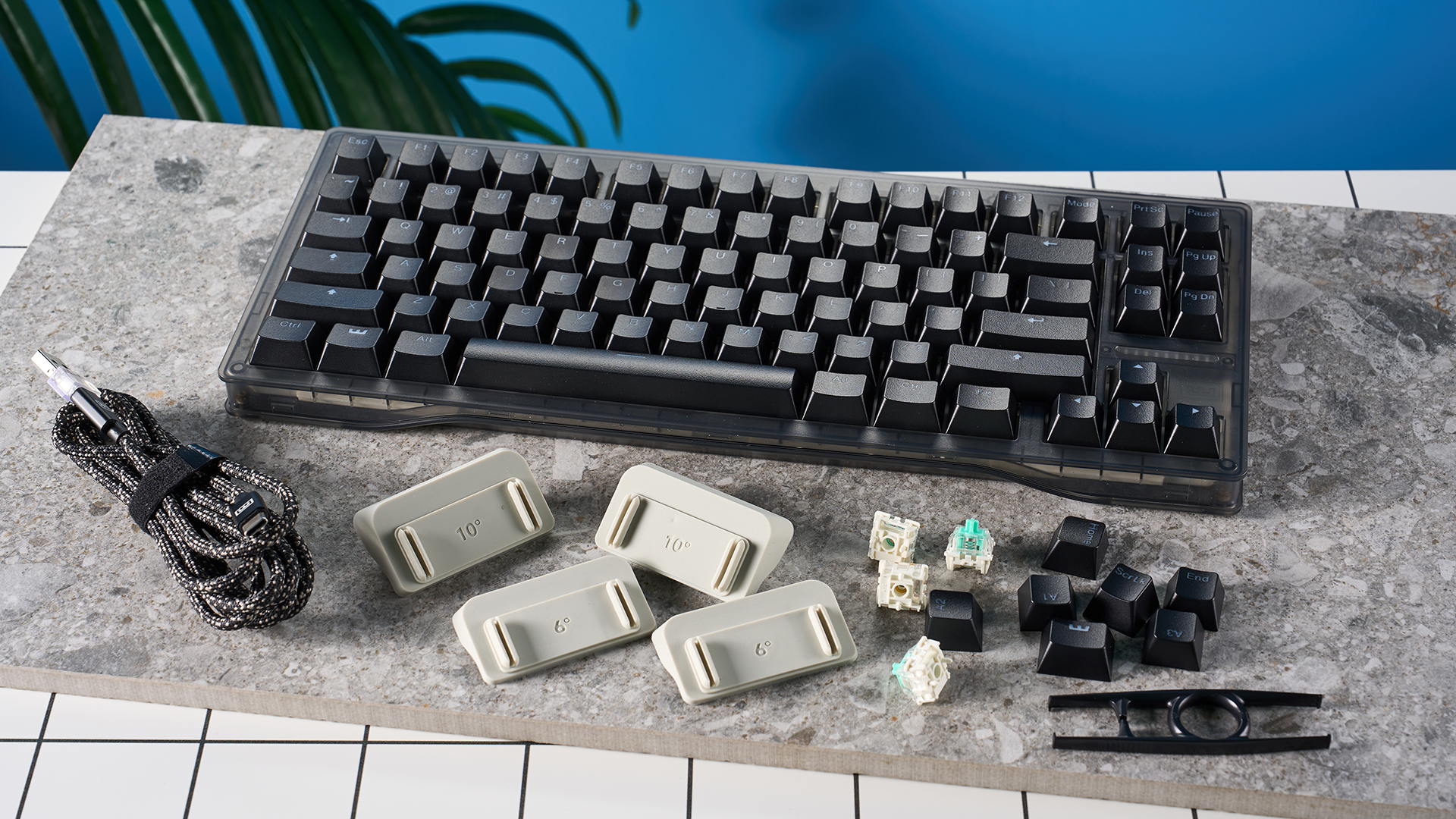
The Wooting 80HE isn’t perfect, but its flaws are few and will give most gamers very little concern. If you need a wireless board, do lots of typing in addition to gaming, or are on a budget, I’d recommend either the Keychron K2 HE, NuPhy Air60 HE or NuPhy Field75 HE. And if you want to do some serious modding, a board with a standard PCB, such as the Keychron Q1 HE, will be a better choice.
With those caveats out of the way, I can round off this review how I want to: with a gushing recommendation. The Wooting 80HE is simply beautiful. From its gorgeous lighting, premium design and effortless typing experience, through to the stuff that really matters: its unmitigated array of gaming features and frankly outstanding (I’d even venture to say “best in class”) companion software. The Wooting 80HE is a keyboard that’s been thoughtfully crafted by people who genuinely give a crap about the end user, and it really shows.







